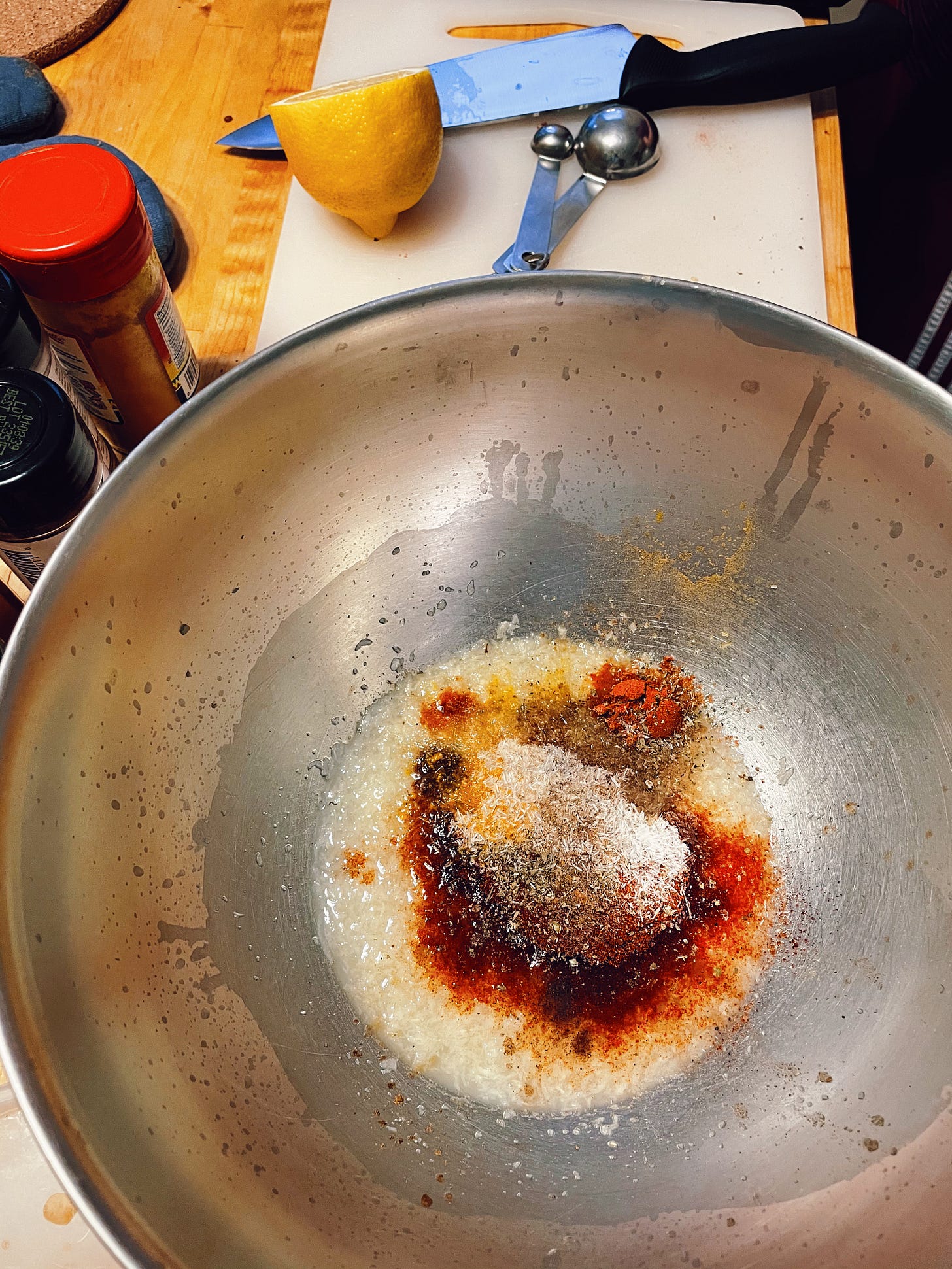I was talking with a friend recently about whale watching out in the Puget Sound, something I was lucky enough to do once years ago when I lived in Seattle. I was working, actually — chaperoning some international students on a day trip to visit the orca whale pods that live full-time around the San Juan Islands. (Without question, that job remains the best one I ever had.)
We departed at dawn, and had just sailed to the edge of Elliott Bay when the captain suddenly killed the engine. Our boat silently bobbed in the early sunlight, cruise and container ships shimmering in the distance. Our tour guide’s voice came on low over the intercom to tell us that some transient orcas would pass very close to our boat. Suddenly we saw them — spouts and fins first, then puffs of sea breath. They came right up to the stopped boat and plunged under, and I caught my breath and held it with them. They surfaced on the other side and within minutes were gone, off to salmon runs and open waters to the south.
The rest of the trip northwest through the Salish Sea was a dream as we lazily observed the seals and seabirds, and enjoyed the height of a mild Pacific Northwest summer. Finally, we reached the resident pods. These orcas were mellower than the ones we saw in the morning; curious, or maybe just nosy, they spyhopped, heads suspended out of the water, observing us observing them at home. I was twenty-three years old and lonely in a city and life I hated, but I watched anyway, and felt them watching me, as my heart shifted toward an awareness of something bigger than my little problems.
Despite being someone who has always fervently loved whales — notably, as a kid I wrote a letter to President Bill Clinton about saving the whales, and received a response my mother framed — I finally read Moby Dick only recently, motivated by some black pandemic humor. All of you are likely familiar with the broad facts of the story: big white whale, captain consumed by his obsession with finding and killing it, long days and nights isolated on the ocean sailing toward doom. Call me Ishmael, etc. The novel gets flack for its lengthy and meticulous descriptions of whaling culture and technology, but I found I liked this. After my world narrowed last year and I too became isolated from my old life, I could relate to the narrator Ishmael’s passion for documenting his daily grind adrift in the vast oceans.
Moby Dick reminds us pointedly of modern capitalism’s lineage with the whalers of the past. Reading the tense and claustrophobic hunting passages, I felt a tightness in my chest - the same tightness I feel thinking about the ceaseless shipping noise drowning out whale conversation. The water is poisoned, warming, and filling whale bellies with plastic. Even the male orcas at Seaworld plead with us for help, their dorsal fins deflated (a problem that occurs only in captivity). The whale watching industry is not totally exempt from this judgment either — although the tour I went on abided by strict low-impact conservation guidelines, other unscrupulous companies skirt the rules.
Whether we’re aboard the Pequod or a tour boat, our fates are yoked with the whales’ fates. We are tangled in the line together, harpoon-stuck and sea bloody. Most days we are Ahab’s exhausted crew, chasing money and glory for our overlords, but some days we experience great awe as a dark eye meets ours in the water. These moments can be guideposts in our lives, and an exhortation to create a new world where we can all swim. After all, our ship sinks if we don’t question the mad captain. Until next time, r
One of the pitfalls of converting a meaty recipe to a vegetarian recipe is figuring out how (and how much) to compensate for the absence of everything meat brings to a dish. It’s not just the protein - a sizzling chicken thigh is giving off fat and moisture that permeates every bite of the finished dish in a way that tofu or seitan simply can’t.
Meat also has a savoriness that seems almost elemental, but it stems from some pretty basic chemistry. Meat is rich in glutamates, and glutamates taste extremely good. For all the hype about the new generation of veggie burgers being designed to “bleed” in their quest for authenticity, both Impossible Burgers and Beyond Burgers contain yeast extract, a glutamate bomb that the Brits have been loving (or hating) for 120 years. It’s not uncommon at all to see vegetarian recipes call for an incongruous dash of soy sauce in search of those meaty umami notes, but add a little too much and your mushroom ragù or vegan chili starts to taste a little weird. Thankfully there’s a way to isolate that effect we want from soy sauce in these dishes, but with nothing that we don’t: MSG.
The MSG “controversy” has been done to death, and I’m not about to rehash it here. People aren’t just consuming glutamates every day in eggs, cheese, tomatoes, and meat -- they’re eating MSG every day too. Not to mention, any Chinese or Indian grocery store will sell you a lifetime supply of MSG (usually Ajinomoto brand) for a couple of bucks. Would this panda really sell you something that would give you a headache? My friend Matt, a line cook at the hotel where I was working, once offered me a taste of the crystalized MSG that was present in barely perceptible levels in most of the vegetarian dishes that left the kitchen. “It tastes like… food, doesn’t it?” He was right - it tasted like food, and from then on I was hooked.
While I’m fiercely protective of Chicago’s reputation as a food city, there are a few areas where we fall short. One thing New York has in spades that I’m endlessly jealous of are the Halal carts posted up on every other corner, offering up a styrofoam clamshell filled to the brim with falafel or shawarma, rice, salad, an assortment of sauces (including a toothpaste-green colored one that I’m still trying to identify) for five or six dollars at any hour of the day or night. There’s simply nothing like this in Chicago.
Whenever I was craving the NYC halal stand experience, I would reach for a couple well-reviewed chicken shawarma recipes and make them with tofu. The results were okay, but I knew they could be better. I eventually started using oyster mushrooms, which caramelize beautifully and honestly, just taste much better than plant proteins. I increased the spices, both in quantity and in variety, adding some warm spice notes that really work here - and of course, a dash of MSG to amp up the flavors. Writing this recipe was a fun challenge in that I had to actually measure quantities that I had just been eyeballing for months and months. It might taste even better out of a styrofoam clamshell, but that I haven’t tested yet. —j
MUSHROOM SHAWARMA
serves two
Juice of one and a half lemons
5 cloves of garlic
⅓ cup of olive oil
2 teaspoons of paprika
2 teaspoons of ground cumin
½ teaspoon of cayenne
½ teaspoon of ground coriander
½ teaspoon of onion powder (yes, it works better here than fresh onion)
½ teaspoon of dried oregano
½ teaspoon of turmeric
½ teaspoon of crystalized MSG
2 teaspoons of kosher salt
2 teaspoons of ground black pepper
1 & ½ teaspoons of white sugar
A pinch of ground cinnamon
A dash of ground ginger
A dash of ground allspice
1 pound of oyster mushrooms
Juice the lemons into a large, deep bowl. With a microplane, grate the garlic into the lemon juice and stir the mixture well. If you don’t have a microplane, a garlic press would work totally fine here. Otherwise, just crush and mince the garlic as finely as humanly possible.
Allow the garlic to mellow a bit in the lemon juice while you measure out all your spices. The cinnamon, ginger, and allspice are optional, but highly recommended. The MSG is absolutely not optional. Add the spices to the bowl, along with the olive oil, and mix well. If you taste the marinade, it will be puckery; sour and salty, maybe too intense. This is good - we’re counting on this mixture to season an entire pound of mushrooms. It can and will!
Oyster mushrooms tend to be very clean, but check for any dirty spots, and cut them out. Roughly chop the mushrooms, leaving their ruffly, frilly ends intact. Add the mushrooms to the bowl and toss them in the marinade. There should be enough liquid to coat all of the mushrooms, but if not, add another glug of olive oil. Allow them to marinate for at least 45 minutes. This would be a perfect time to whip up some tahini sauce or some tzatziki, a crunchy salad, some spiced Basmati rice, or all of the above. Periodically check on the mushrooms, and if/when the marinade has pooled at the bottom of the bowl, give them a gentle toss to redistribute.
Once the mushrooms have marinated, place a pan over high heat. If you have a grill pan, this is a perfect time to use it, but it’s not strictly necessary. Remove the mushrooms from the marinade and allow them to drain a bit while the pan heats up. Excess marinade in the pan will easily burn and be very bitter. There will be no need to oil the pan - the mushrooms will still be slick from the marinade.
Sear the mushrooms hard, being careful not to overcrowd the pan. Only add as many of them as can fit in one layer; we want to caramelize these, not steam them. After a couple of minutes, flip the mushrooms to brown the other side, and repeat with any remaining mushrooms. Serve immediately with your fixings and warm pita bread.











